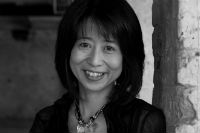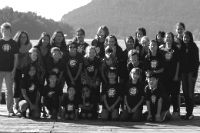Christ Church Cathedral | Map
Fretwork; Emily Ashton; Richard Boothby; Reiko Ichise; Asako Morikawa; Sam Stadlen; Vancouver Children’s Choir; Rupert Lang
A collaboration with the Vancouver Children’s Choir
Fretwork
Emily Ashton
Richard Boothby
Reiko Ichise
Asako Morikawa
Sam Stadlen
The In Nomine forms a rich repertory of late Renaissance English instrumental music. This fascinating program explores a treasure trove of In Nomine settings, all stemming from John Taverner’s 16th-century setting of a Mass built on the plainchant ‘Gloria tibi Trinitas.’ Taverner’s attractive setting inspired 150 years of English composers to create variants in their own style. Some of the most beautiful In Nomine settings along with three new works written by contemporary composer Gavin Bryars for Gamba consort and children’s choir will be heard in this seductive concert program.
Supported by the Early Music Vancouver Board of Directors
Click here for information about parking around / transiting to Christ Church Cathedral
Programme
John Taverner
In Nomine
Christopher Tye
Crye
Trust
Robert Parsons
In Nomine
Ut re mi
Gavin Bryars
Tops
The Aire Bridge
William Byrd
In Nomine
Picforth
In Nomine
Orlando Gibbons
Two In Nomines in 5 parts
I N T E R V A L
Nico Muhly
Slow (In Nomine in 5 parts)
(2015)
William Lawes
Consort sett in G minor
Fantazy, On the plainsong, Aire
Bryars
Deer poem in monosyllables
In Nomine (after Purcell)
(1995)
Henry Purcell
Fantazia in four parts
Fantasia upon one note
Programme Notes
We’ve been playing In Nomines for over thirty years – in fact, it was the title of our first recording – and we’ve been fascinated by the variety that composers achieved in this seemingly-inflexible form.
It started life as a short section of a long Mass, set by one of the great early 16th century English composers, John Taverner. The whole mass is based on the plainchant Gloria tibi trinitas and the distinctive shape of the chant is often heard and imitated. Yet it is only in the Bendictus section of the Sanctus that it is heard in its entirety, reduced to just four parts, setting the words: In nomine Domini – in the name of God. It is counterpoint of limpid beauty, effortless and otherworldly.
Yet there is no reason why this section should have inspired so many imitations, starting soon after and doggedly carrying on though 150 years until a 20 year-old Henry Purcell came upon examples of them in his youthful studies and produced two masterly works – three, if you allow that the Fantazia Upon One Note takes the principal to limit of its possibilities.
In almost all In Nomines, one part (usually the also, or second part down) plays the same plainchant in long, slow, equal notes, while the rest of the parts weave faster counterpoint around this cantus firmus, or fixed song. Of course, there are so many In Nomines – over 300 have survived – that it’s impossible to generalise without contradiction: there is at least one that passes the tune around all the parts, and gives it rhythmic shape; there are many with the tune in parts other than the alto; and there are some that move in a similar speed to the tune. Picforth’s is unique: all the parts have just one note value, but that value is different in each part
Christopher Tye was one of the earliest and most prolific of In Nomine writers and his body of work is especially varied – we present one that imitates the criers on the street and another that adds a extra beat to the normally four-beat length of each note of the tune. The title instructs the players to trust that what he wrote – unusual though it is – is correct.
The most popular In Nomine by far was this one by Robert Parsons: there are over 30 surviving sources for this one work, and its easy to feel it’s rather shocking appeal. Byrd, Parsons successor at the Chapel Royal, was clearly influenced by it in one of his five works in five parts.
But Orlando Gibbons takes the palm for faithfully imitating the original in one and finding a completely original beauty n another.
Nico Muhly is unusual as a contemporary composer in that he is completely at home in this world of English 16th century choral music, having been an Anglican choirboy; and he brings this unique sensibility to bear on his In Nomine, exploring a completely different sonority, yet remaining faithful to the original.
William Lawes was sufficiently far away from the original to become confused about what it in fact was. The second movement of his G minor consort set was first called ‘Innominy’ and then crossed out and replaced with ‘Upon the plainchant’. Someone who knew had probably pointed out that he had chosen the wrong plainchant for the In Nomine. But he made up for it later, writing an extraordinary 6-part version in C minor.
In 1995 we asked 12 composers to write companion pieces to the Purcell Fantazias and In Nomines for viols. Gavin Bryars chose Purcell’s 6-part In Nomine as his reference point and created this heart-stoppingly beautiful work, a worthy companion to its original.
Purcell, in his late teens, embarked on a study of earlier English music and probably came across a large manuscript with the title “A booke of In nomines and other solfainge songes in v vi vi & viii parts for voyces or Instrumentes”; his own manuscript would read: “Here Beginneth ye 6, 7 & 8 part Fantazias”. In neither book are there any 8-part pieces, but both contain one or two 7-part In nomines. This manuscript, in his own hand, is the only source for his Fantazias & In Nomines, which makes it clear that these works were never performed in his lifetime – the viol was quickly losing ground to the violin in the 1680s and, even if bass viols were still frequently used, treble and tenor viols were a rare sight. The taste for this serious and profound music had evaporated, even as some of the greatest works in the form were being composed.
Richard Boothby
August 2016

Fretwork
“Fretwork is the finest viol consort on the planet” – Stephen Pettitt, The London Evening Standard.
Fretwork has been around for getting on for 40 years, performing music old and new, and look forward to a challenging and exciting future as the world’s leading consort of viols.
They have expanded their repertory to include music from over 500 years, from the first printed consort music in Venice in 1501 to music written this year. And, in between, everything that can be played on a consort of viols – Byrd & Schubert, Purcell & Shostakovitch, Gibbons & Britten, Dowland & Grieg.
While they used to fly all over the globe, they have now committed to reducing their carbon footprint by travelling in Europe only by train or electric cars – recently, they have toured Germany, France, Spain, Austria & Slovenia in their two Teslas.
The future sees many exciting projects based on the thrilling juxtaposition of old and new; making the experience of old music new and bringing the sensibilities of past ages to bear on contemporary music

Emily Ashton
Emily Ashton studied music at Clare College, Cambridge, and baroque cello and viola da gamba with Jonathan Manson at the Royal Academy of Music. Since then she has played with many of the country’s leading period instrument ensembles, including the Orchestra of the Age of Enlightenment, Academy of Ancient Music, Dunedin Consort, Orchestra of the Sixteen and Gabrieli Consort.
Emily is a member of the viol consort Chelys, who recently released their debut recording of Ayres and Divisions by Christopher Simpson. She has also performed around Europe and recorded discs of Lawes,
Tomkins and Ward with Phantasm. Emily has given solo recitals at the
Spitalfields Festival and Cotswolds Early Music Festival, and with various chamber groups has performed at venues including the Wigmore Hall, Handel House and St Martin-in-the-Fields.

Richard Boothby
After studying with Nikolaus Harnoncourt in Salzburg, he founded the Purcell Quartet in 1984 and was a founder member of Fretwork in 1985. Since then his career has been bound up with these two groups with whom he records and tours; and through whom he plays the broadest range of repertory for the instrument from the earliest music to the latest contemporary music commissioned for viols.
With the Purcell Quartet he has recorded nearly 50 albums with them for Hyperion and Chandos. He tours Europe, Japan and the United States regularly with both ensembles. In 1998 he directed performances of Monteverdi’s ‘L’Incoronazione di Poppea’ with the Purcell Quartet; and in 2001 directed them in a fully-staged production of ‘L’Orfeo’, with Mark Padmore in the title role.
As a soloist, he has given many recitals of the rich solo repertory, and in 1994 he recorded the three Bach sonatas for viola da gamba and harpsichord with Shalev Ad-El for Chandos Records, to critical acclaim. He has given many recitals of the great suites by Antoine Forqueray, with whose music he feels a special affinity. He is professor of Viola da Gamba at the Royal College in London.

Reiko Ichise
Tokyo born Reiko read musicology at Kunitachi College of Music where she started playing viols. After she studied with Yukimi Kanbe and Tetsuya Nakano, she came to the UK to pursue her study with Richard Boothby at the Royal College of Music. She now has established herself as a one of the leading viol players in the UK, regularly performing with many leading early music ensembles and orchestras. She joined Fretwork in 2008. Reiko lives in London and is a professor at the Royal College of Music.

Asako Morikawa
Asako was born in Takamatsu, Japan. She started playing viola da gamba when she was 13 years old, but studied violin initially in the Toho Gakuen Music High School in Tokyo. She then continued her studies at the Toho Gakuen School of Music as a student of viola da gamba with Tetsuya Nakano.
In 1988 she moved to Holland to further her studies with Wieland Kuijken at the Royal Conservatorium in The Hague where she received her Soloists Diploma in 1993 and then studied baroque violin with Thomas Albert at the Hochschule für Künste Bremen. As a baroque violinist she has played with Bremen Baroque Orchestra, Musicalische Campagney and Musica Fiata.
Since 1996 she has lived in London and is in demand as a viola da gamba soloist and continuo player throughout the United States, Canada, Europe, Japan and Australia, having played with Charivari Agréable, The English Concert, The King’s Consort, Ton Koopman and Phantasm. She has taught at Summer courses in Poland, Australia, Japan and Austria. In 2004 she has become a member of Fretwork and has since performed worldwide, broadcasting and making recordings.

Sam Stadlen
Based in London and York, Sam took up the viola da gamba under the tutelage of Susanna Pell while reading for his Master’s in music at the University of York. He has been a member of Fretwork since 2015, appearing with the group regularly live and on the radio both in the UK and internationally.
He also appears as a continuo player and soloist on viol and cello with a number of early music ensembles. These include the viol consort Chelys, with whom he has recently recorded a CD of music by Dowland with Dame Emma Kirkby, as well as early music ensembles such as the Stanesby Players, The London Abel Quartet, Follia, L’Academie du Roi Soleil, and viol duo Ensemble Touché with Ibrahim Aziz. With several of these groups, he performs both early repertoire and modern compositions and has developed a keen interest in the performance of contemporary music on early instruments. With Fretwork in particular, he has performed music by George Benjamin, Michael Nyman, John Taverner, Nico Muhly and has recently recorded The World Encompassed – a new work by Orlando Gough describing Sir Francis Drake’s circumnavigation of the globe. In October 2016, Sam completed a three-week concert tour of Canada, the US, and Colombia celebrating Fretwork’s 30th anniversary with concerts including the American premiere of Nico Muhly’s Slow.
In addition to his performing work, Sam is Professor of Viol Consorts at the Royal College of Music in London and has been an associate lecturer at the University of York and a guest lecturer at the Royal Academy of Music. He holds a PhD in the influences of poetry and declamation on the composition and performance of the pièces de viole in late seventeenth- and early eighteenth-century France.

Vancouver Children’s Choir
Founded in 1983 by Rupert Lang, the Vancouver Children’s has received praise at local music festivals, as well as The International Kathaumixw in Powell River, and placed second in the Children’s Choir category at the International Musical Eisteddfod, in Llangollen, Wales.
Through their almost 30 year history, VCC has offered excellent vocal training as well as a wide variety of performance experience: including singing for Royalty (Prince Charles and Lady Diana at Expo 86), civic and provincial functions, sound-track work for NBC and Paramount Pictures, back-up vocals for artists such as Judith Forst and the VSO; numerous corporate events; singing at sunset on the top of Whistler Mountain; New York’s Carnegie Hall; St. Peter’s in Rome; local collaborative concerts with Christ Church Cathedral Choir, Chor Leoni, Elektra Women’s Choir, Vancouver Cantata Singers, and Vancouver Chamber Choir. Their most recent colaboration was being recorded and filmed for a Stephen Speilberg made-for-TV series called Falling Skies.
VCC recordings take their titles from a work composed specifically for them by their director: Cantate, Spirit of the Child, Can You Imagine?, Carol of the Child and Pilgrim Song. The latter is an anniversary compilation album containing samples of over 20 years of recording history, plus 4 newly recorded tracks.

Rupert Lang
Rupert Lang, born in Alberta, took studies in fine arts after high school, later changing course to take his first degree (B.Mus. Honours in performance) at the University of Manitoba. He went on to England where he studied at The Royal School of Church Music, receiving the Archbishop of Canterbury’s Certificate in Church Music and diplomas from The Royal College of Music and Royal College of Organists. Lang completed his studies in England at the University of Cambridge, St. John’s College, receiving an MA (Music) studying with George Guest, Gillian Weir and John Scott.
After returning to Canada, Lang became Organist and Director of Music at West Vancouver United Church. There he met and collaborated with Gillian Hunt as a soloist and a conductor and teacher for many years. In 1983 Lang also founded the Vancouver Children’s Choir. Since 1986 he has been Organist and Director of Music at Christ Church Cathedral, where VCC is also choir in residence. Lang has taken his Cathedral choir on to win first prize 4 times in the Church Choir Category of the CBC National Amateur Choral Competition in 1998, 2000, 2002 and 2006.
Also a composer, Lang has written music for both choirs he directs – a number of them published by Boosey & Hawkes – as examples: Agneau de Dieu, Can You Imagine?, Cantate Domino, Carol of the Child, Earth Teach Me, How Like an Angel, Kontakion, Mass For Many Nations, Spirit of the Child, Ubi Caritas and Under Heaven. He has received various commissions from groups such as Central Bucks West High School in Pennsylvania, Chor Leoni Men’s Choir, Christ Church Cathedral, EnChor, Vancouver Cantata Singers, Vancouver Chamber Choir, Vancouver Children’s Choir, Vancouver Men’s Chorus, and The World of Children’s Choirs 2001 Symposium.



